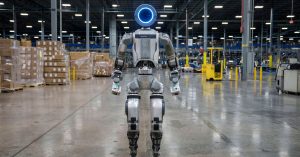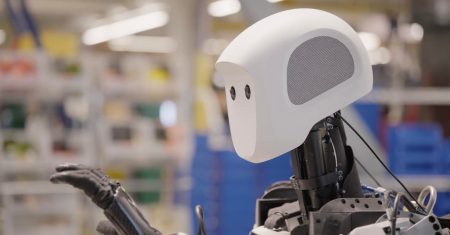President and CEO of Vodafone US Inc., leading Vodafone Business commercial operations throughout North America.
Economic uncertainty, global conflict and regional instability reinforce the need for businesses to find operational resilience and nurture talent in the age of hybrid working. Post-pandemic, hybrid working is now an expectation for many. In 2021, PwC found 72% of workers want a mix of remote and in-person working.
Yet hybrid working presents operational and cultural challenges. Cybersecurity concerns are paramount due to devices being remote and the networks they operate on not always being secure. One study found that 32% of remote workers use software for work not approved by IT.
Remote workers can experience varying levels of secure connectivity: charging your device in an airport is even considered unsafe. Culturally, enterprises must understand how to manage remote teams, measure their productivity and retain a cohesive company culture.
Companies have adopted different approaches to these challenges. HSBC ordered its U.K. workforce into the office three times a week. Meta, Disney and IBM have ended fully remote working. These approaches deliver uniformity, but can they do so across companies, countries and cultures? A survey of 130 CEOs and decision-makers from across Northern America and Europe found 99% of respondents attesting to the benefits of remote or hybrid working.
Successful implementation of any approach to hybrid work means prioritizing employee welfare and giving employees an equally favorable experience wherever they are based. This involves making the workplace more attractive to top talent and equipping that talent with the tools to deliver.
The Transformation Of Work And What It Means For Enterprises
A 2022 IWG survey of 1,000 Americans over 18 found that 44% would likely look for another job if their employers ceased to allow hybrid working. The hybrid expectation presents competition between organizations vying for talent. Today, 17% of businesses offer workplace flexibility to source talent.
This competition exists in a time of inequality and insecurity. This inequality is evident in the digital divide between sectors on remote working and between enterprises with differing IT budgets and differing office space standards.
Then, there is insecurity surrounding generative AI. PwC’s ‘Workforce of the Future’ study found that 74% of workers are ready to re-train to remain employable, yet over half thought governments should shield them from automation while 37% thought the technology was a jobs threat. Meanwhile, managers and employees often feel unsure about how to measure productivity in a remote workforce.
The insecure, changing workplace also emphasizes resiliency challenges. In tough economic circumstances, enterprises must focus on IT infrastructure and operations, information, cybersecurity and human resources management. That’s according to the 2021 Gartner Organizational Resilience survey, which asked enterprises which management disciplines are participating in organizational and operational resilience.
Enterprises—not to mention governments and public sector bodies—must also tackle skills shortages and find collaborative ways of working to support growth. To prosper and retain talent, workplaces and workers must find common ground. I believe this can be achieved through the boundless workplace.
Tomorrow’s Workplace For Tomorrow’s Workers
The boundless workplace is a holistic approach to hybrid working, enabling workers to do their best work in their most productive environments. It means equipping workplaces with the tools and environments needed to inspire cohesion, collaboration and motivation.
The boundless workplace enables workers to perform anywhere, on any device and at any time, driving growth and resilience. Modern, boundless workplaces should give employees flexibility while allowing them to feel part of their organization wherever they are.
In addition, enterprises must make their offices into a space that encourages collaboration between remote and on-site employees. By 2025, 55% of the Global 2000 will have redesigned offices to improve employee welfare and support business performance. A safer and more inclusive office can also support ESG initiatives.
An office, shared workspace or remote location must prioritize cybersecurity to make business more adaptable and resilient. Increased enterprise agility will free up resources, helping organizations adapt to changing circumstances, typically through cloud-based anything-as-a-service (XaaS) offerings, giving businesses the flexibility to scale in accordance with their growth.
Technology Considerations For Supporting Boundless Workplaces
Boundless workplaces rely on connectivity and technology that give organizations and their staff the means to securely work anywhere, on any device, supporting growth and resilience.
Software-defined local area networks (SD-LANs) help enable this. SD-LAN is flexible connectivity for physical locations or a network of sites. It enables several users and devices to access the network and supports SaaS and collaboration tools, which consume bandwidth over a vast area network (WAN). SD-LAN simplifies IT operations, enhances connectivity and protects data.
Unified communications as a service (UCaaS) is another important means for enabling productivity anywhere. Providing staff with a one-stop shop for all their communication, from calls and video chat to text messaging and file sharing offers convenience and helps save costs for businesses while providing added security. A streamlined UCaaS platform can also help businesses move 2.6 times quicker according to one study.
Ultimately, employees want the freedom to work from locations that suit their lifestyles and at times when they are most productive. It is not enough to just enable hybrid working through policy and technology. Enterprises must facilitate employee flexibility and well-being to support operational resilience and customer experience. This requires higher levels of secure connectivity, attractive hybrid workspaces and welcoming company cultures, including all team members, wherever they are.
As the economy reshapes itself around AI, enterprises must identify what transformation strategies work best for them. This will be the golden zone between appropriate automation, hybrid working and securing the talent needed to grow the business.
Final Thoughts
Hybrid working was once considered a necessity but is now viewed as an obligation by many. It should be neither of these. It should be the moment where business resilience and connectivity interact, defining the future of employment and shaping future enterprises.
Forbes Technology Council is an invitation-only community for world-class CIOs, CTOs and technology executives. Do I qualify?
Read the full article here










